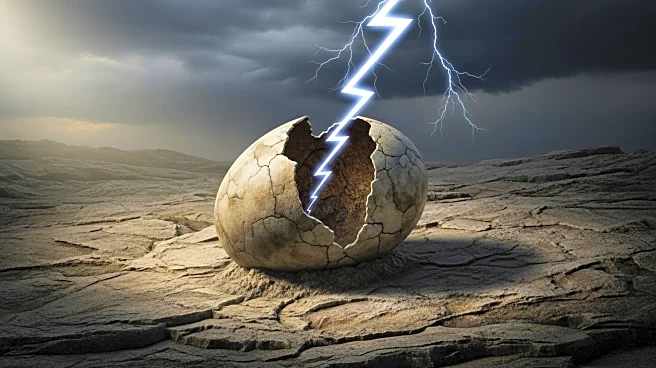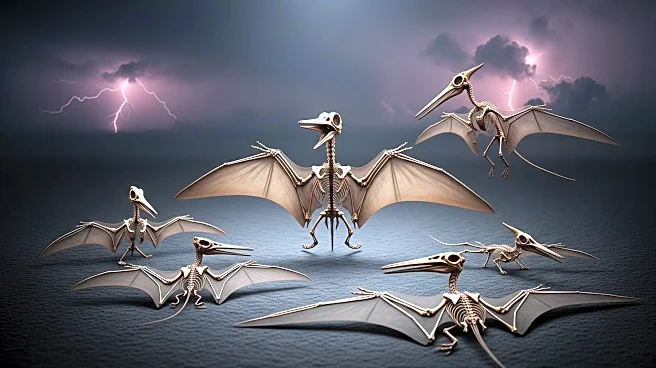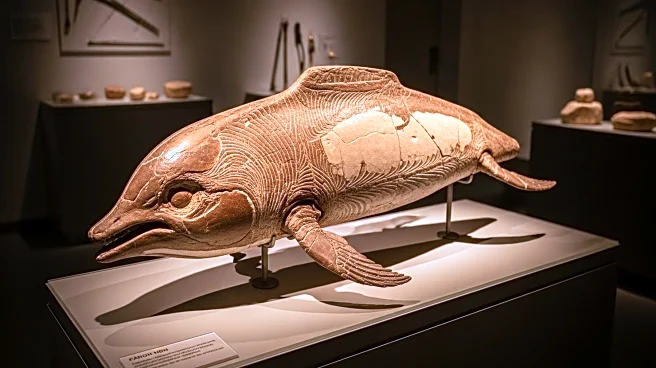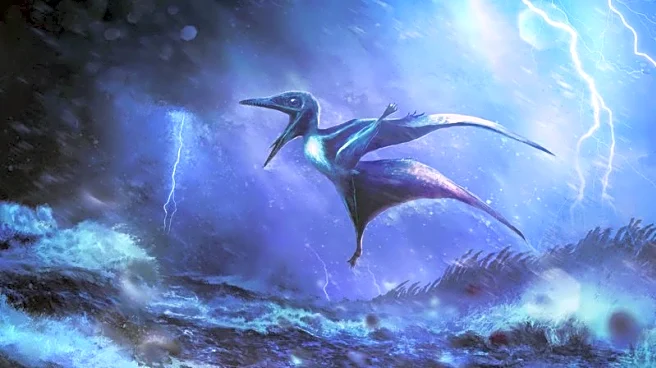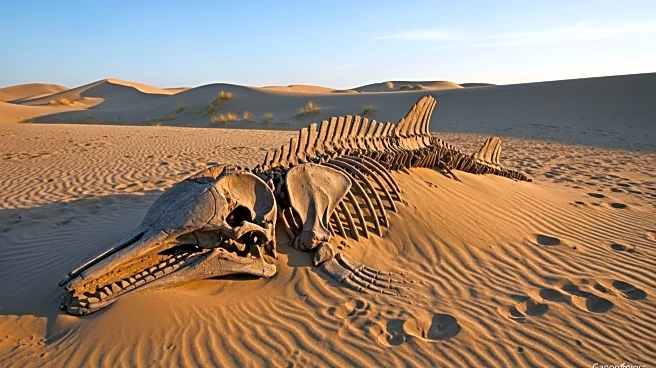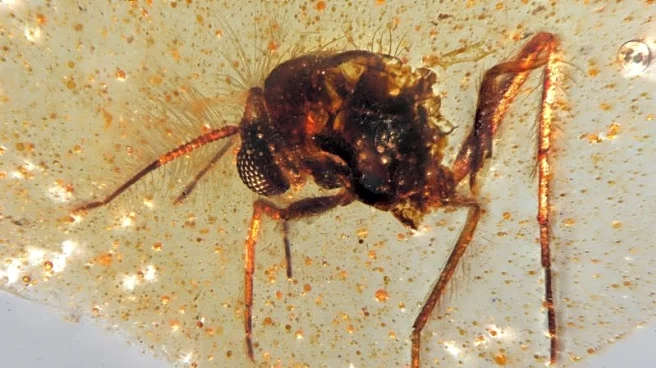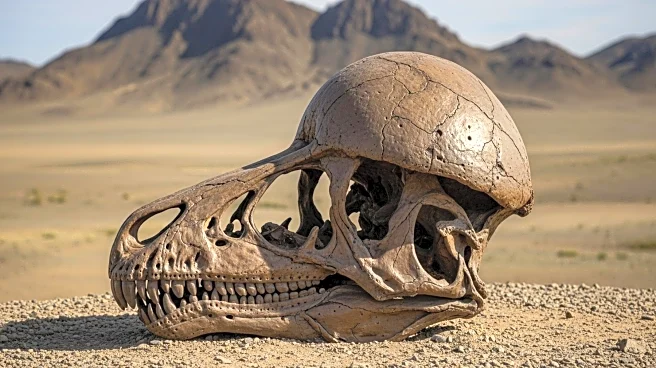What's Happening?
Researchers have uncovered fossils of two baby pterosaurs in Germany, believed to have died in a storm 150 million years ago. The fossils show signs of injuries consistent with strong winds, suggesting the pterosaurs were caught in a storm and drowned. This discovery provides insights into the conditions of the Jurassic period and the preservation of delicate fossils.
Why It's Important?
The study offers rare evidence of how ancient creatures died, contributing to our understanding of prehistoric ecosystems. It highlights the challenges of fossil preservation and the impact of environmental events on species survival. The findings may inform future research on pterosaur biology and the dynamics of ancient climates.
What's Next?
Researchers may continue to explore the Solnhofen Limestone for additional fossils, seeking to understand the diversity and behavior of pterosaurs. The study could lead to further investigations into the effects of storms on fossilization processes and the preservation of small specimens.
Beyond the Headlines
The discovery prompts discussions on the role of natural disasters in shaping evolutionary history. It may inspire new methodologies for studying fossil records and interpreting the ecological impacts of ancient climate events.

